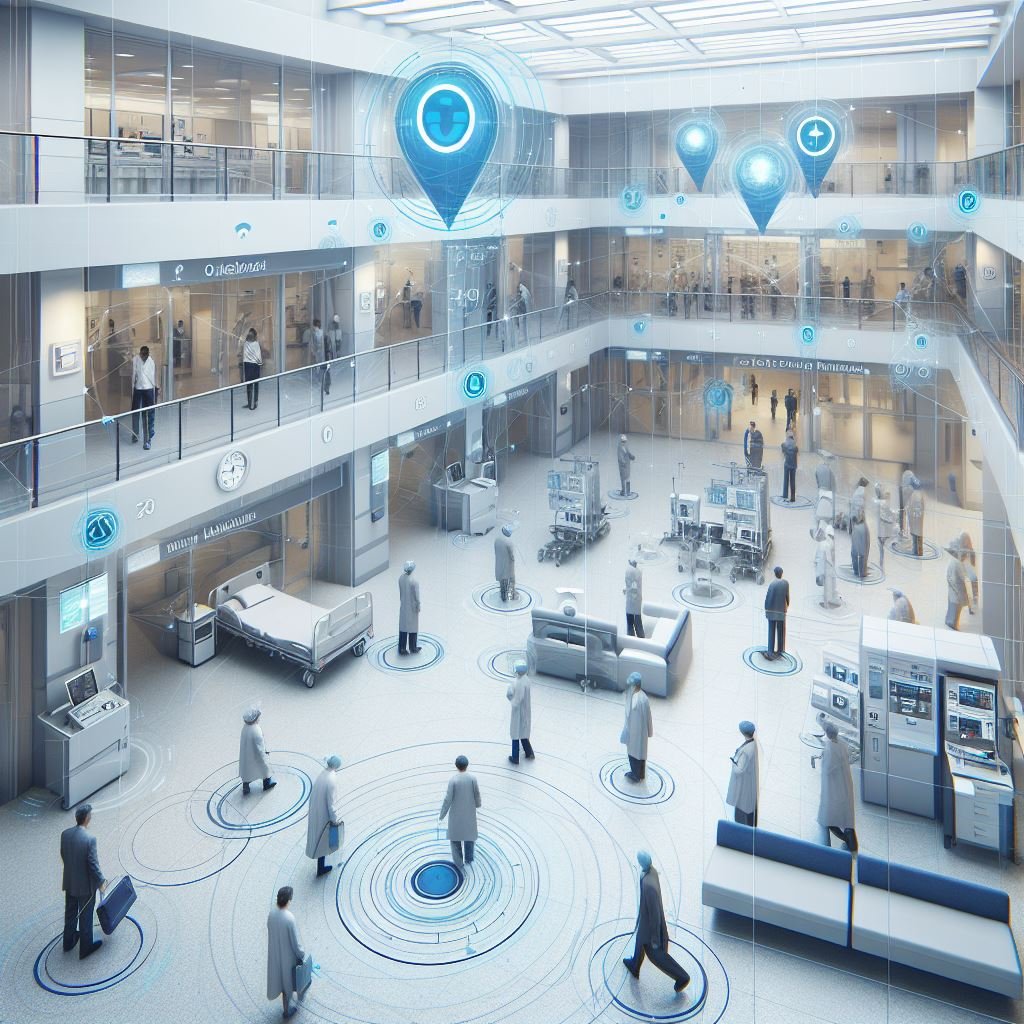


The digitalization of hospitals is now a major challenge in the modernization of healthcare infrastructure. However, the reality on the ground shows that while some healthcare facilities have embarked on this transformation, others are still struggling to take the leap. Digitalization affects multiple areas, including hospital buildings and services aimed at healthcare staff, as well as improving the patient experience and the overall quality of care. So, where do we stand?

Digitalization of Hospitals: Where Do We Stand?
Healthcare professionals are often burdened with time-consuming tasks that divert them from their primary mission: providing care. From searching for equipment to handling administrative tasks or managing emergencies, these professionals lose valuable time that could otherwise be devoted to their patients. The digitalization of hospital infrastructures can radically change this reality. By integrating appropriate technological solutions, it becomes possible to free up time for healthcare staff while improving their workplace safety.
For example, with indoor geolocation, tracking essential equipment such as syringe pumps, hospital beds, stretchers, or wheelchairs becomes more efficient. No more unnecessary trips to locate missing equipment. This type of solution not only allows real-time location of these items but also quickly allocates them to the departments most in need, optimizing care efficiency.
Another significant advantage of digitalization of hospitals lies in improving staff safety. Geolocation systems can be used to trigger emergency alerts in case of an attack or incident. This system enables rapid intervention by security teams, thereby enhancing the peace of mind of healthcare workers, who are often exposed to stressful situations. Such solutions can also track response times after a patient call, helping to ensure better monitoring of care quality.
From the patient’s perspective, digitalization is transforming their care journey. One of the most crucial challenges for hospitals is improving the flow of operations, particularly in emergency services and outpatient care. Digital tools help improve flow management, whether by optimizing operating room schedules or reducing wait times in emergency departments.
Location systems can also play a vital role in flow management. By tracking the movement of patients and healthcare workers, it becomes easier to manage movement within the hospital, optimize patient care, and reduce the stress associated with long waits. These technologies allow for better allocation of human and material resources based on real needs, offering patients greater comfort while reducing the burden on staff.
The patient experience is further enhanced by digital tools that allow real-time tracking of the progress of a consultation or surgery. This personalized tracking improves transparency for patients and their families, increasing their satisfaction and trust in the hospital.

Indoor Geolocation: An Exemplary Use Case
A striking example of the power of digitalization is the use of indoor geolocation. This technology not only helps locate equipment and people but also optimizes flow management within a facility. Take the example of a hospital that implements a geolocation system to track, in real time, the step-by-step progress of a patient throughout their hospital journey and the use of its operating rooms. Thanks to this technology, it is possible to optimize surgery scheduling, avoid bottlenecks, and better distribute resources across different specialties. This leads to better cost management, reduced patient wait times, and more efficient use of equipment.
Additionally, in case of an emergency, locating intervention teams can significantly reduce the time needed to respond to a critical situation, whether it’s for a patient in distress or a healthcare worker in danger. These few seconds saved can sometimes make the difference between life and death.
Despite these numerous advantages, many hospitals are slow to invest in digitalization, mainly due to institutional and financial barriers. Hospital directors and financial managers often view digitalization as an additional expense rather than a long-term investment. However, the potential benefits are many: better cost management, optimized working hours, improved working conditions for healthcare workers, and increased patient satisfaction.
The issue of digitalization mainly arises in the context of new projects, such as the construction of new buildings or the renovation of existing hospitals. In these cases, integrating digital solutions is a priority. However, for existing facilities—which naturally represent the majority—the transition is more complex. Implementation costs are often deemed too high, and the benefits not always well understood or quantified.

Barriers to Digitalization: Misperception of Costs and Benefits
Conclusion: Digitalization in Service of caregivers and Patients
Digitalization should not be seen as a constraint but as an opportunity. It not only optimizes human and material resources but also ensures a safer and more efficient working environment for hospital staff. Moreover, it significantly enhances the patient experience, making their care journey more seamless and transparent.
It is urgent to raise awareness among decision-makers that these technologies do not complicate the work of healthcare professionals; on the contrary, they are designed to ease their daily workload and boost their efficiency. The long-term gains in terms of management, costs, and well-being for both patients and healthcare staff are undeniable. Hospitals that embrace the digital transformation will not only improve their performance but also enhance their ability to provide quality care in an increasingly demanding environment.
If you have any questions or would like to find out more, please contact us.
The global strategy for digital health is based on resolutions adopted by the United Nations General Assembly and the World Health Assembly, related global and regional WHO reports, regional strategies, the two-part report by the ISO Technical Committee on Health Informatics regarding electronic health architecture, the resolution on ICD-11, and the WHO family of international classifications and te
Source : Global Strategy on Digital Health 2020-2025
This book chronicles the extraordinary evolution of the “Intelligent Health System” and its embrace of innovative technologies, many of which were initially demonstrated in real time on the trade show floor and are now explored in depth in The Rise of the Intelligent Health System. Each chapter highlights the vast potential of integrating advanced technology with the intricate world of patient care and safety. The authors provide a detailed look at how hospitals are transforming into interactive, intelligent environments, fueled by real-time data and powered by artificial intelligence.
Source : The Rise of the Intelligent Health System By Paul H. Frisch
Improving patient care is a national priority in the United States, with nurses playing a crucial role in achieving this goal. However, the ongoing nursing shortage has significantly impacted the situation, further worsened by the COVID-19 pandemic. T
he healthcare sector was among the hardest hit during the Great Resignation, which saw over 5 million people leave the workforce between 2020 and 2022. Reports suggest that healthcare lost 20% of its workforce, including 30% of nurses. Job burnout has been a leading factor in nurses leaving patient care for other careers. One solution to reduce burnout and turnover is to enhance nursing job satisfaction. Allowing nurses to spend more time on direct patient care and less on administrative tasks is key to this. Ensuring nurses focus primarily on patient care during each shift not only improves job satisfaction but also helps reduce inefficiencies in hospital settings.
Source : HIMSS Applying RTLS Technology to Improve Nurse Efficiency and Patient Care
by Marci Bennafield, MPH, and Gracie Frericks, Georgia State University, Byrdine F. Lewis College of Nursing and Health Professions